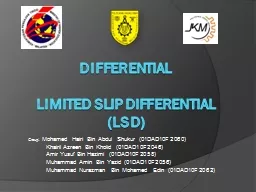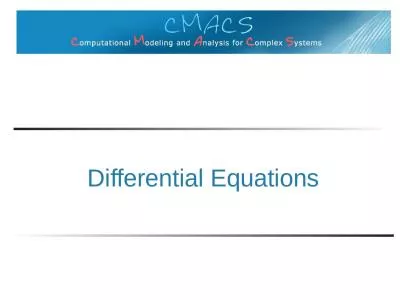PPT-MATLAB Ordinary Differential Equations – Part II
Author : kittie-lecroy | Published Date : 2018-03-15
Greg Reese PhD Research Computing Support Group Academic Technology Services Miami University September 2013 MATLAB Ordinary Differential Equations Part II 20102013
Presentation Embed Code
Download Presentation
Download Presentation The PPT/PDF document "MATLAB Ordinary Differential Equations �..." is the property of its rightful owner. Permission is granted to download and print the materials on this website for personal, non-commercial use only, and to display it on your personal computer provided you do not modify the materials and that you retain all copyright notices contained in the materials. By downloading content from our website, you accept the terms of this agreement.
MATLAB Ordinary Differential Equations – Part II: Transcript
Download Rules Of Document
"MATLAB Ordinary Differential Equations – Part II"The content belongs to its owner. You may download and print it for personal use, without modification, and keep all copyright notices. By downloading, you agree to these terms.
Related Documents












![[READING BOOK]-Practical MATLAB Modeling with Simulink: Programming and Simulating Ordinary](https://thumbs.docslides.com/976356/reading-book-practical-matlab-modeling-with-simulink-programming-and-simulating-ordinary-and-partial-differential-equations.jpg)

